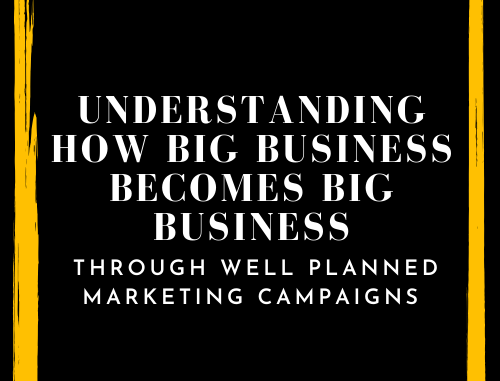
In the world of business, the giants of the industry didn’t get where they are by chance. Behind their success lies a strategy that combines meticulous planning, substantial investment, and innovative marketing campaigns. Let’s delve into how some of the world’s most recognizable corporations have used these elements to become industry leaders.
1. Investing in Marketing and Sponsorship
One of the hallmarks of successful big businesses is their willingness to invest heavily in marketing and sponsorship. Companies like CocaCola and Nike have demonstrated how investing in advertising can drive brand recognition and consumer loyalty.
CocaCola is a prime example. The brand has been a major player in marketing for decades, spending billions annually on advertising campaigns. Their iconic commercials and sponsorships of major events like the Olympics and FIFA World Cup have solidified their global presence. This strategic investment ensures that CocaCola remains at the forefront of consumers’ minds.
Nike also exemplifies the power of marketing investment. The company’s “Just Do It” campaign, launched in 1988, has become one of the most successful marketing campaigns in history. Nike’s sponsorship of high profile athletes and teams, coupled with their innovative marketing strategies, has helped them maintain a strong market position.
2. The Power of an Easily Recognizable Logo
A memorable logo is crucial for brand recognition. Apple, with its minimalist apple logo, and McDonald’s, with its golden arches, are prime examples of how a simple, recognizable logo can become synonymous with the brand itself. These logos are not just symbols but have become a part of their respective companies’ identities.
Apple’s logo is not just a design; it represents innovation and quality. Its consistent use across all marketing materials reinforces its brand identity and keeps the company top of mind for consumers.
McDonald’s golden arches are instantly recognizable and have been a key element in their branding strategy. The logo’s visibility on signage, packaging, and advertising ensures that McDonald’s maintains a strong, consistent presence in the market.
3. Cohesive Branding
Cohesive branding is more than just having a recognizable logo; it involves creating a unified brand message across all channels. Pepsi and Microsoft are examples of companies that excel in this area.
Pepsi has undergone various branding refreshes, but each iteration has maintained a cohesive brand identity. Their campaigns, from “Pepsi Generation” to “Live For Now,” consistently reflect their brand values and message, creating a strong, cohesive brand presence.
Microsoft, with its recent rebranding efforts, has ensured that its logo, color schemes, and messaging are consistent across all platforms. This cohesive branding strategy helps Microsoft present a unified image to its users and reinforces its position as a leader in technology.
4. Planning Over Execution
Successful marketing campaigns are not just about execution; they are the result of extensive planning. Procter & Gamble (P&G) and Unilever are masters at this approach.
P&G invests considerable time and resources into researching market trends, consumer behavior, and campaign effectiveness. Their approach involves meticulous planning to ensure that each campaign aligns with their overall marketing strategy and objectives.
Unilever follows a similar approach. Their campaigns are well planned to ensure they resonate with target audiences and align with their brand values. The company’s “Sustainable Living Plan” is an example of how long term planning and strategic execution can drive brand success and societal impact.
5. Leveraging Data and Analytics
In the modern marketing landscape, data and analytics play a crucial role. Amazon and Netflix are notable for their data driven marketing strategies.
Amazon uses data analytics to personalize user experiences and drive sales. Their recommendation algorithms and targeted advertising are the results of sophisticated data analysis, allowing Amazon to cater to individual customer preferences and behaviors.
Netflix similarly uses data to guide its content creation and marketing strategies. By analyzing viewing patterns and preferences, Netflix creates personalized recommendations and targeted campaigns, keeping users engaged and subscribed.
6. Innovative Campaigns and Creativity
Innovation and creativity are key to standing out in a crowded market. Red Bull is a prime example of a company that has used creative marketing to build its brand.
Red Bull’s “Stratos” campaign, which featured Felix Baumgartner’s record breaking space jump, was a groundbreaking marketing stunt that captured global attention. This campaign not only showcased Red Bull’s commitment to extreme sports but also reinforced its brand image as a bold, adventurous company.
In Summary
Big businesses have mastered the art of marketing through a combination of strategic investment, brand recognition, cohesive branding, meticulous planning, data utilization, and innovative campaigns. By understanding and implementing these elements, companies can build strong, recognizable brands and achieve long term success. As the market continues to evolve, the principles of effective marketing remain consistent, underscoring the importance of thoughtful strategy and execution in driving business growth.
